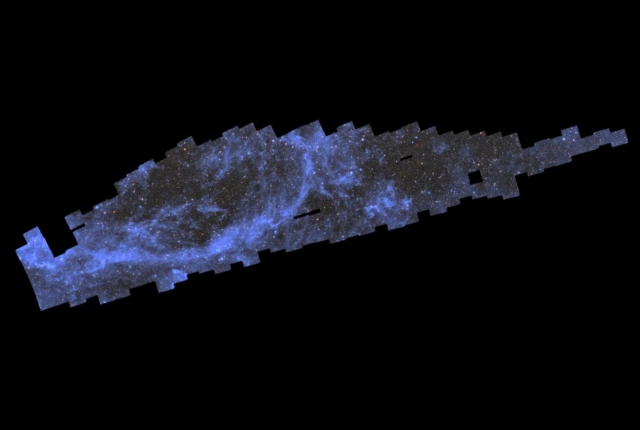The First Piece of Euclid’s Cosmic Atlas

(Image: ESA/Euclid/Euclid Consortium/NASA, CEA Paris-Saclay, image processing by J.-C. Cuillandre, E. Bertin, G. Anselmi)
A map of 14 million galaxies and tens of millions of stars in the Milky Way. This massive 208-gigapixel mosaic marks the very first milestone of Euclid, the ESA’s space telescope. The image is the outcome of 260 observations conducted between 25 March and 8 April 2024, just two weeks during which 132 square degrees of the sky were mapped — an area over 500 times the size of the full moon.
Although impressive, these numbers represent just 1% of Euclid’s ultimate goal. Over six years, the space telescope will study the shapes, distances and motions of billions of galaxies as far as ten billion light-years away. This monumental challenge aims to produce the most extensive three-dimensional map of the Universe ever created.
Even this first map, however, can already be used to analyse the hidden influence of dark matter and dark energy on the Universe. Euclid is equipped with two advanced instruments, the Visible Instrument (Vis) and the Near Infrared Spectrometer Photometer (NISP), that enable it to capture vast numbers of cosmic objects in exceptional detail. The map can be magnified up to 600 times, revealing the large-scale structure of the Universe as well as the features of individual galaxies.
(Image: ESA/Euclid/Euclid Consortium/NASA, CEA Paris-Saclay, image processing by J.-C. Cuillandre, E. Bertin, G. Anselmi)
But this is just the beginning. So far, 12% of the planned mapping has been completed. By March 2025, an initial dataset covering 53 square degrees will be published, including a preview of the Euclid Deep Field — regions of the sky dedicated to the deepest observations.
Built and operated by the European Space Agency (ESA), Euclid was developed with contributions from NASA and in collaboration with the Italian Space Agency (ASI), the Italian National Institute for Astrophysics (INAF), the National Institute for Nuclear Physics (INFN), and several Italian universities. Among these, the Department of Physics and Astronomy of the University of Bologna was one of the mission’s founders and creators. The journey began in 2007 with the SPACE (Spectroscopic All-sky Cosmic Explorer) project, presented by an international team led by Professor Cimatti as part of ESA’s Cosmic Vision 2015-2025 space programme.






